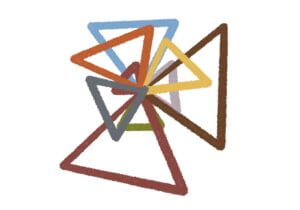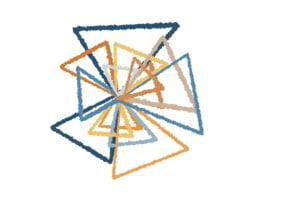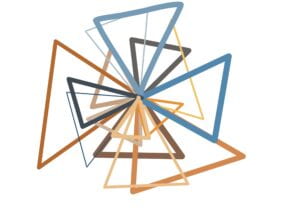This week’s reading materials are about the Conditional Design and Bernard Frize’ s art work. For conditional designers, the process, but not the final result, is the product. Painters’ communication and collaboration during the process is very important, and they focus on things that adapt to their environment, emphasize change and show difference. On the other hand, Bernard Frize argues that process painting doesn’t exist, and “every good painting shows the seamless transition from process to product”.
Their approach of painting differs from my previous design in the following aspects. First of all, they involve collaboration among different painters. In my previous experience, even if it was a piece done by a group of people, we simply just split each other’s part and worked on our own, with little communications or collaboration. Secondly, conditions and events lead to their paintings, but what led me to my paintings were more like instructions. These instructions included what the final outcomes should look like, what techniques should be involved, etc. In my opinion, the conditions are added into their personal styles whereas for me, it is my personal drawing habits (I can’t say it’s my style because there is no such thing as style for me as a learner :)) that were added to the instructions.
The set of rules I’d like to try is: starting from the middle of the paper, use triangle only. The starting point should be where the last end point is. I hope to generate something like a kaleidoscope. (see in the pic below, pic 1) The collaboration can happen when deciding which color to use next or what the size of the triangles should be, etc..

Below is a pic (pic 2) resulted from my rule:
start from the middle of the paper
use triangle only
colors blueish and orangish
the starting point should be where the last end point is

During the process I realized where to put the next triangle is important to, especially when I use a thick strokes because the stroke may overlap each other.:) Rules like “size of the stroke starts from 10, and minus 1 point when producing a new triangle each time until it reaches 1; then add 1 point till it reaches 10” may produce interesting results as well. (see pic 3.)
During the process of pic 3 I realize the shape of the stroke matters too. I used smooth line this time to better illustrate the change of sizes, but if I use other strokes, the lines can vary based on the pressure we employed.

After my exploration process, I read this website: https://conditionaldesign.org/workshops/vitruvian-paint-machine/. In this piece the artists employed more shapes, each given a set color. The outcome seems more abstract whereas mine is more predictable.
Leave a Reply